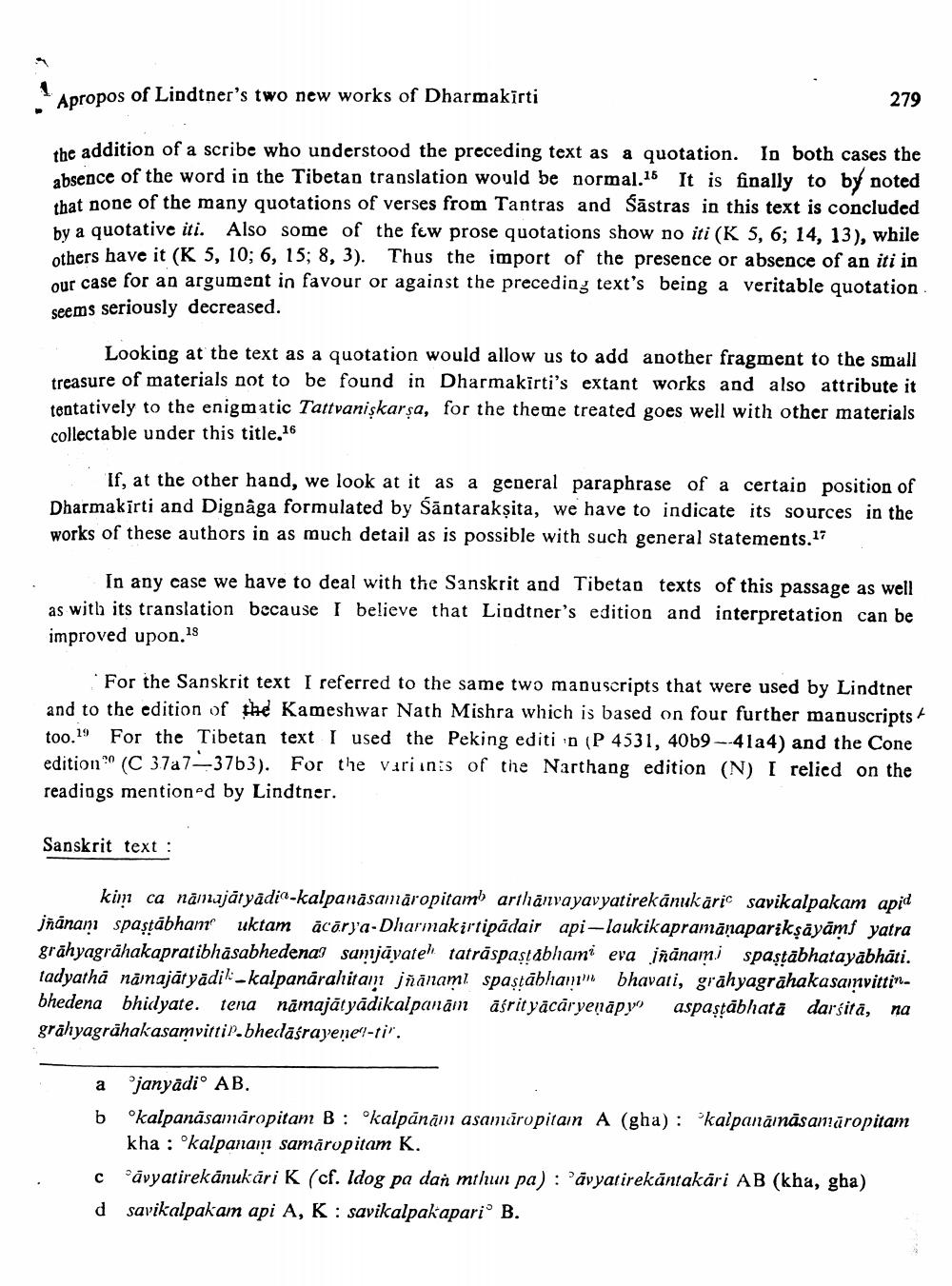________________
Apropos of Lindtner's two new works of Dharmakirti
279
the addition of a scribe who understood the preceding text as a quotation. In both cases the absence of the word in the Tibetan translation would be normal.16 It is finally to by noted that none of the many quotations of verses from Tantras and Šāstras in this text is concluded by a quotative iti. Also some of the few prose quotations show no iti (K 5, 6; 14, 13), while others have it (K 5, 10; 6, 15; 8, 3). Thus the import of the presence or absence of an iti in our case for an argument in favour or against the preceding text's being a veritable quotation seems seriously decreased.
Looking at the text as a quotation would allow us to add another fragment to the small treasure of materials not to be found in Dharmakirti's extant works and also attribute it tentatively to the enigmatic Tattvanişkarşa, for the theme treated goes well with other materials collectable under this title.16
If, at the other hand, we look at it as a general paraphrase of a certain position of Dharmakirti and Dignaga formulated by Sāntarakṣita, we have to indicate its sources in the works of these authors in as much detail as is possible with such general statements.17
In any case we have to deal with the Sanskrit and Tibetan texts of this passage as well as with its translation because I believe that Lindtner's edition and interpretation can be improved upon.19
* For the Sanskrit text I referred to the same two manuscripts that were used by Lindtner and to the edition of the Kameshwar Nath Mishra which is based on four further manuscripts too.19 For the Tibetan text I used the Peking editi in (P 4531, 40b9--41a4) and the Cone edition?" (C 37a7-3763). For the variinis of the Narthang edition (N) I relied on the readings mentioned by Lindtner.
Sanskrit text:
kim ca nāmajātyadio-kalpanāsamāropitamb arthānvayavyatirekānukāric savikalpakam apid jñānam spastābhanruktam acõrya-Dharmakirtipādair api - laukikapramānaparikṣāyāmf yatra grāhyagrahakapratibhasabhedenasamjāyateh tatrāspastabham eva jñānami spastābhatayābhāti. tadyatha nāmajātyädil_kalpanārahitam jäänami spaștābhamı bhavati, grähyagrāhakasainvittin. bhedena bhidyate. tena nāmajātyādikalpanām āśrityācāryeņāpya aspastābhatā darsitā, na grähyagrahakasamvittip.bhedāśrayene?-ti".
a ojanyadio AB. b kalpanasamāropitam B : kalpānām asamāropitain A (gha): kalpanāsnāsamūropitam
kha : kalpanam samăropitam K. c Pavyatirekānukāri K (cf. Idog pa dan mthun pa) : Pāvyat irekāntakäri AB (kha, gha) d savikalpakam api A, K: savikalpakapario B.




